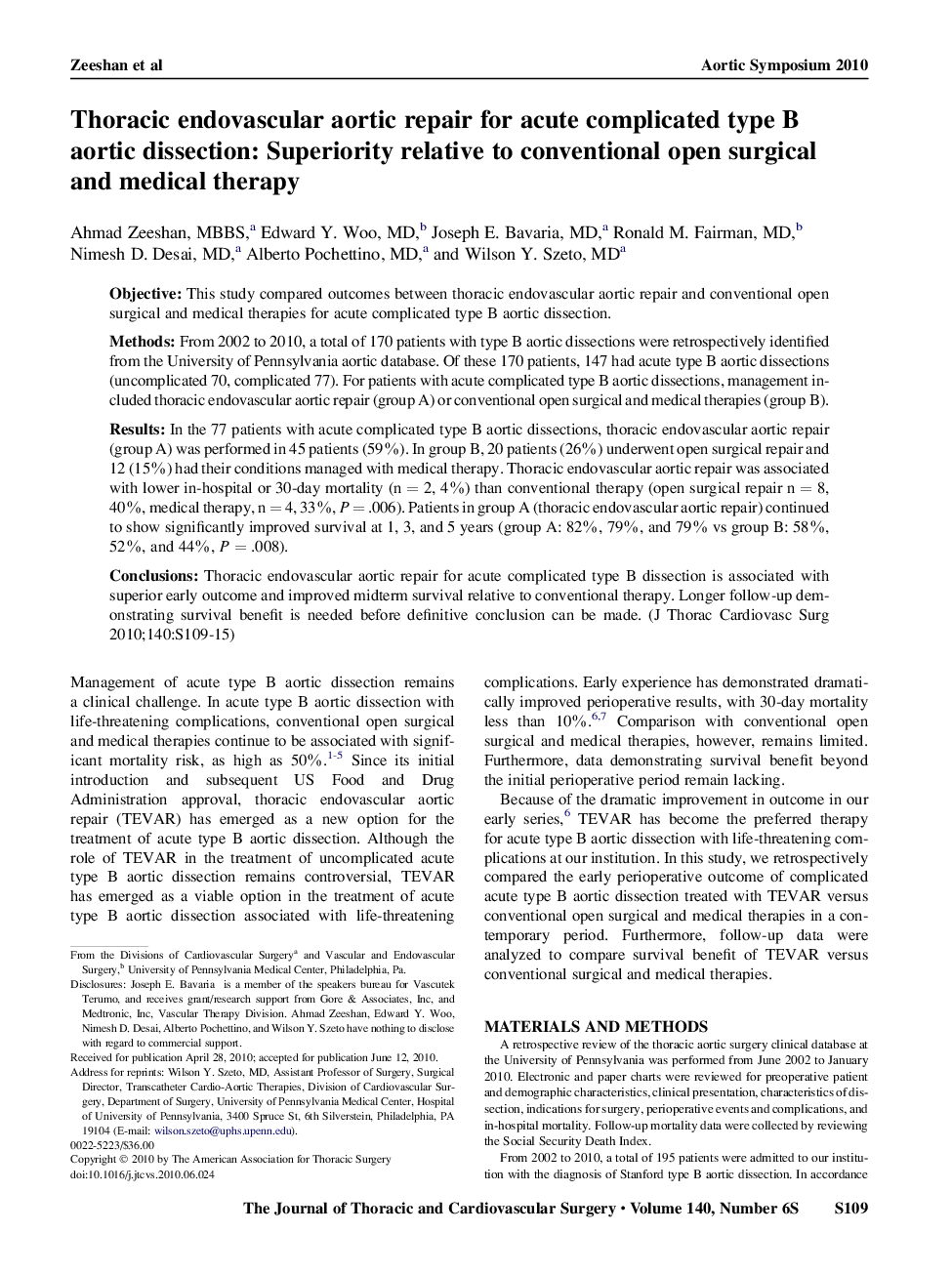| Article ID | Journal | Published Year | Pages | File Type |
|---|---|---|---|---|
| 2983625 | The Journal of Thoracic and Cardiovascular Surgery | 2010 | 7 Pages |
ObjectiveThis study compared outcomes between thoracic endovascular aortic repair and conventional open surgical and medical therapies for acute complicated type B aortic dissection.MethodsFrom 2002 to 2010, a total of 170 patients with type B aortic dissections were retrospectively identified from the University of Pennsylvania aortic database. Of these 170 patients, 147 had acute type B aortic dissections (uncomplicated 70, complicated 77). For patients with acute complicated type B aortic dissections, management included thoracic endovascular aortic repair (group A) or conventional open surgical and medical therapies (group B).ResultsIn the 77 patients with acute complicated type B aortic dissections, thoracic endovascular aortic repair (group A) was performed in 45 patients (59%). In group B, 20 patients (26%) underwent open surgical repair and 12 (15%) had their conditions managed with medical therapy. Thoracic endovascular aortic repair was associated with lower in-hospital or 30-day mortality (n = 2, 4%) than conventional therapy (open surgical repair n = 8, 40%, medical therapy, n = 4, 33%, P = .006). Patients in group A (thoracic endovascular aortic repair) continued to show significantly improved survival at 1, 3, and 5 years (group A: 82%, 79%, and 79% vs group B: 58%, 52%, and 44%, P = .008).ConclusionsThoracic endovascular aortic repair for acute complicated type B dissection is associated with superior early outcome and improved midterm survival relative to conventional therapy. Longer follow-up demonstrating survival benefit is needed before definitive conclusion can be made.
